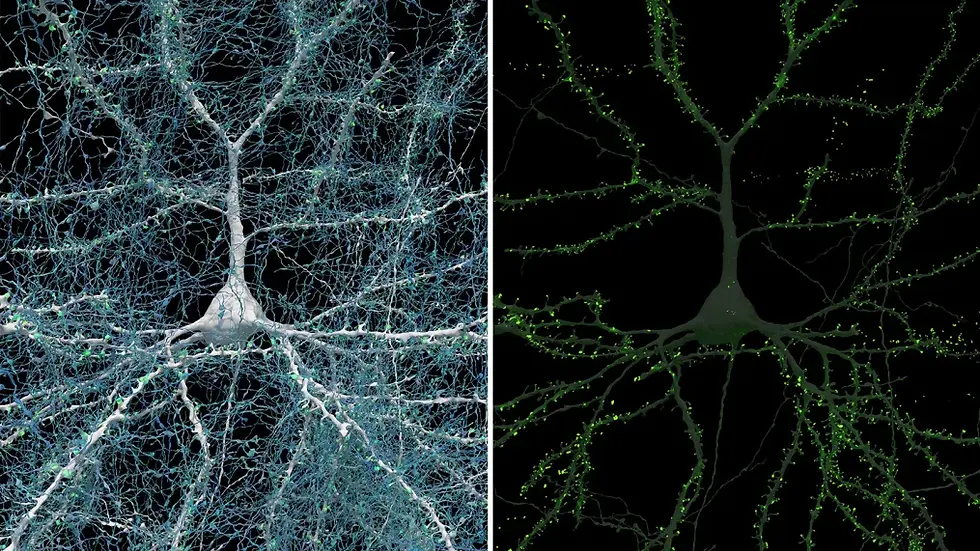Epilepsy and the Brain: The Neuroscience Behind Seizures and Treatment
- Parnian

- Mar 17
- 3 min read

Epilepsy is one of the most common neurological disorders, affecting over 50 million people worldwide. It is characterised by recurring seizures caused by abnormal electrical activity in the brain. But what exactly happens in the brain during a seizure, and how do neuroscientists study and treat epilepsy? In this post, we’ll explore the neuroscience behind epilepsy, its causes, and the latest advancements in research.
What is Epilepsy?
Epilepsy is a chronic brain disorder in which neurons—nerve cells responsible for transmitting electrical and chemical signals—become overly excitable, leading to sudden bursts of electrical activity. These bursts disrupt normal brain function, causing seizures that can affect movement, behaviour, sensations, or even consciousness.
Not all seizures are the same. Neuroscientists classify them into two main types:
Focal (Partial) Seizures: Originate in a specific part of the brain and may cause mild symptoms, such as twitching or sensory changes.
Generalised Seizures: Involve both hemispheres of the brain and can lead to convulsions, muscle stiffness, or loss of consciousness.
The Neuroscience Behind Epileptic Seizures
The Role of Neurons in Epilepsy
The brain operates through a delicate balance of excitatory and inhibitory signals. Neurons communicate using neurotransmitters, with glutamate promoting excitation and gamma-aminobutyric acid (GABA) acting as an inhibitory force to keep electrical activity in check.
In epilepsy, this balance is disrupted. Overactive neurons fire excessively and synchronise abnormally, leading to the uncontrolled electrical activity that triggers a seizure.
Brain Regions Involved in Epilepsy
Epileptic seizures can originate from different areas of the brain, but some regions are more prone to abnormal activity:
The Hippocampus: Often involved in temporal lobe epilepsy, the hippocampus plays a crucial role in memory and emotions. Seizures here can cause confusion, déjà vu, or repetitive movements.
The Motor Cortex: When seizures originate in the motor cortex, they can cause uncontrolled muscle jerks or convulsions.
The Thalamus: This relay centre of the brain helps regulate consciousness. Seizures affecting the thalamus can result in a loss of awareness.
Causes of Epilepsy: Why Do Some Brains Misfire?
Epilepsy can have many underlying causes, including:
Genetic Factors: Some forms of epilepsy are inherited and linked to mutations in genes that regulate neuronal excitability.
Brain Injuries: Trauma, strokes, or infections like meningitis can damage brain tissue and increase seizure risk.
Neurodevelopmental Disorders: Conditions such as autism and cerebral palsy are often associated with epilepsy.
How Neuroscientists Study and Treat Epilepsy
EEG: Mapping the Brain’s Electrical Activity
Electroencephalography (EEG) is one of the most powerful tools for studying epilepsy. By placing electrodes on the scalp, scientists can detect abnormal electrical patterns associated with seizures. AI and machine learning are now improving EEG analysis, helping doctors predict and classify seizures more accurately.
Neuroimaging: Finding the Source of Seizures
MRI and PET scans allow researchers to identify structural abnormalities in the brain that may trigger seizures. Advanced imaging is helping scientists pinpoint which brain regions need treatment.
3. Treatments: From Medication to Brain Surgery
Epilepsy treatments aim to control seizures by restoring the balance between excitatory and inhibitory signals. Common treatments include:
Antiepileptic Drugs (AEDs): These medications work by stabilising neuron activity. However, around 30% of people with epilepsy have drug-resistant seizures.
Ketogenic Diet: A high-fat, low-carb diet has been shown to reduce seizures in some patients by altering brain metabolism.
Surgery: For severe cases, neurosurgeons may remove
or disconnect the part of the brain responsible for seizures.
Brain Stimulation: Deep brain stimulation (DBS) and vagus nerve stimulation (VNS) are newer treatments that use electrical impulses to regulate brain activity.
The Future of Epilepsy Research
Recent breakthroughs in neuroscience are offering hope for better epilepsy treatments:
AI for Seizure Prediction: Machine learning is being used to analyse EEG data and predict seizures before they happen.
Gene Therapy: Scientists are exploring ways to correct genetic mutations linked to epilepsy.
Optogenetics: This experimental technique uses light to control neurons, potentially offering new ways to stop seizures.
Final Thoughts
Epilepsy remains a complex disorder, but neuroscience is rapidly advancing our understanding of its mechanisms. With new technology and treatments, we are moving closer to better seizure control and, one day, a cure.
Sources:
Engel, Jerome, Jr., and Timothy A. Pedley, editors. Epilepsy: A Comprehensive Textbook. 2nd ed., Wolters Kluwer Health/Lippincott Williams & Wilkins, 2008.
Fisher, Robert S., et al. “Epileptic Seizures and Epilepsy: Definitions Proposed by the International League Against Epilepsy (ILAE) and the International Bureau for Epilepsy (IBE).” Epilepsia, vol. 46, no. 4, 2005, pp. 470–472. Wiley Online Library, doi:10.1111/j.0013-9580.2005.66104.x.
Pitkänen, Asla, et al. “Epileptogenesis.” Cold Spring Harbor Perspectives in Medicine, vol. 5, no. 10, 2015, doi:10.1101/cshperspect.a022822.
Löscher, Wolfgang, et al. “Animal Models of Seizures and Epilepsy: Past, Present, and Future Role for the Discovery of Antiseizure Drugs.” Neuropharmacology, vol. 69, 2013, pp. 97–104. ScienceDirect, doi:10.1016/j.neuropharm.2012.05.046.
“Epilepsy.” Nature Neuroscience, www.nature.com/subjects/epilepsy/neuro.



Comments